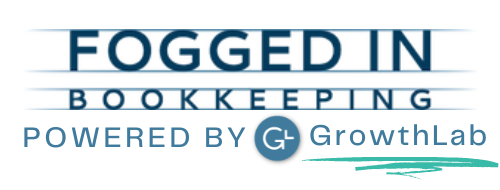15 Apr Paperless Bookkeeping: Pipedream or Reality?
Can your business really break free of paperwork? Is a file cabinet free office really possible?
The short answer is yes, absolutely. Paperless bookkeeping is possible and as good as it sounds. The longer answer is that it takes having the right tools, a solid data back up plan, and practice. Being paperless is as good as it sounds, and getting there doesn’t have to be a long journey. At Fogged In we can generally convert a business to paperless in a day or two.
Paperless Bookkeeping Reality
Fogged In Bookkeeping went paperless over 5 years ago. That was a bold move back then. Now being paperless is much more run of the mill, yet surprisingly is still not the standard. Paperwork and bills are hardly the best part of being a small business owner. Page upon page of paperwork memorializing your transactions are piling up all over offices and in file drawers. These piles are seldom the crowning achievement of any business, but they are a necessary evil. However, without these markers of actions taken you may find yourself in some hot water. Accounting, bookkeeping, audit, taxes, and reporting all rely on the paperwork our businesses produce. In extreme cases, like a tax audit, the paper trail can make or break us. Breaking free of the paper can feel like a pipedream to the small business owner. So how do we make it happen?
Step 1: Commit To the Paperless Idea
This means you don’t commit to going paperless with your gas receipts and everything else keeps going in the file drawer. Consistency and uniform process is key. If you are trying to remember what should be paper and what should be digital you’re going to make yourself crazy. Ultimately, the experiment will fail.
Commit to being digital. You must get buy-in from those affected. Get your head into it and allow yourself to get excited! If you need a little motivation here is a stat for you. A survey by AIIM determined that the average cost of a single paper form to a business is $4.56. Multiply that by the pieces of paper you have floating around and try not to get excited by the savings ahead.
Step 2: Get the Right Tools for Being Paperless
Scanners
The right scanner and applications can make or break a paperless transition. If you are using some all-in-one scanner/printer just stop now. The paper jams alone will be so painful you’ll question why you ever started. Those are your father’s tools. Invest in a good scanner. There are different models that better suit different uses. For us, the Fujitsu ScanSnap has proven a worthy workhorse. Its smooth page feed works well even for huge documents. The direct integration with a large variety of software and data storage platforms is an added bonus. Your desktop scanner is only part of your solution though.
Picking the Apps
For on-the-go and quick upload you should have an app that integrates with your accounting solution. For our clients we find Hubdoc to be the best fit in the on-the-go category being we are a Quickbooks focused firm. Its direct integration with Quickbooks Online is a selling point. The feature that actually sets it apart though is its fetch feature. Within the app, you set up logins for vendors with digital billing such as your cell phone provider and credit card companies. You also can set up secure connections to your online banking for statements. Hubdoc then fetches the bills for you and adds them to your files. The total hours saved with this feature are endless. We find that our clients love the app for on the go receipt capture. Clients that use Hubdoc as part of their paperless strategy are spending less on their bookkeeping and saving time. They also have more complete sets of records.
App for Employee Cards
For slightly larger companies with multiple employee credit cards and the need for more accountability, we use Expensify. The direct link to the credit card makes a list of receipts needed for the employee. Being accountable for spending in this simple way often creates savings. Employees start looking at those subscription fees and quickly begin deleting the unnecessary apps and recurring subscriptions. Savings and a more audit ready set of records is a win-win.
Step 3: Have a Backup Plan
Fear is the enemy. For those like your bookkeeper letting go of the paper is a scary idea. Data loss is scary. Paperless, digital recordkeeping doesn’t have to be scary though. Here is the key, redundancy. Just like we back up our computers, or should, we want our data storage backed up. Giving over trust to another company to keep our records secure and safe should not be an act of faith. Choosing a company for your app or data storage should be a research exercise full of reassurances.
The Questions to Ask
Here are the key questions you should ask:
- How do you back up your data servers and have you ever had a failure?
- What kind of security do you have? (A: you want the same kind of security as your bank provides) Yes, this means Google Docs and Dropbox are not the solutions for your file storage if those records you are storing include full account data. Employee records with social security numbers and new hire forms should not be stored on less secure servers.
- How do I export my data if I want to make a move later? This is key. If canceling your subscription causes you to lose your data then you are in a bad spot. For example, if you attach images in Quickbooks Online and later cancel your subscription you lose the images. There is nothing wrong with attaching images in QBO you just want those records to existing elsewhere too. Find solutions that allow you to take your data with you.
- How long have you been in business? This is key. You must find companies that are stable and well funded to ensure your data’s stability.
Paperless, Making It Happen
Making a paperless bookkeeping system a reality can be as simple as the right hardware and apps, including your team, committing to the idea and doing it. Mapping and documenting the process once you experiment is the final step to success. By mapping the process you can implement paperless systems with your team more easily and replicate the process as you add new team members.




No Comments